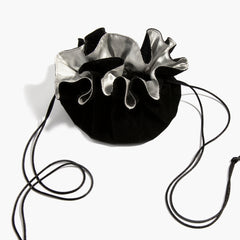It is recognized worldwide – Pasternak, ayin hasad, böse blick, mauvais oeil, ayin harac, zemmel verés, mal de ojo, droch-shuil – all names for the evil eye from the different cultures it is engrained in. The evil eye is one of the strongest and most powerful ancient symbols in the world. If you’re curious about the evil eye’s meaning and history, learn more about it here!
Evil Eye History

The symbol of the evil eye dates back as early as 5000 BC in Mesopotamia and has roots in Christian, Jewish, Muslim, Buddhist, and Hindu cultures. The history runs deep because, since the dawn of time, human beings have turned towards talismans and meaningful symbols for protection and guidance.
The birth of the evil eye in antiquity was tied to many different cultures. Some had endured extreme hardship, others believed in curses, and many more tied the evil eye to their diety. Despite the differences between these religions and cultures, the intention of the evil eye has always been the same.
Evil Eye Meaning

The evil eye has been used throughout the centuries to ward off curses or malicious intent. Many believed the evil eye could protect against three different kinds – unintentional, intentional, and unseen. These curses manifest in things such as jealousy, someone wishing you bad luck, or negative energy surrounding you. Anyone who feared ill intent or bad luck would often wear the evil eye for protection.
Many cultures believed in the evil eye’s meaning so strongly that they would place it on cribs, houses, barns, and sacred possessions to ensure they were protected and secure.
Hamsa Meaning
The hamsa is often a companion to the evil eye because it too is a symbol of protection, as well as blessing, power, and strength. You’ll often find the evil eye nesting within the palm of a hamsa to offer dual protection and positivity.
Evil Eye Design

Most commonly, the evil eye design depicts a single eye in blue, black, and white hues. Sometimes, you’ll find pieces with a full eye, complete with iris, pupil, lid, and eyelashes. Other times, the evil eye’s meaning and symbology are stylized as a single dot on a background to represent the pupil and the iris. It’s almost always featured on a blue background, as any shade of blue is a fierce protective color.
The eye sees all ignorance and wickedness and reflects it back to the one casting it via its glare. Known as the Nazar, meaning “vision” in Arabic, this type of amulet is meant to ward off negativity for the wearer.
Hamsa Design
Since the hamsa’s meaning is as much about blessing and strength as it is about deflecting negativity, it’s no surprise that it’s shaped like an open palm. In one interpretation, it’s saying stop to all the bad energy heading your way. In another way, it’s placing a blessing over you with open hands.
Reasons to Wear the Evil Eye

When people wear hamsa and evil eye jewelry, it encourages them to look beyond what surrounds them towards something more profound. You can utilize the evil eye’s meaning to protect something close to your heart or wear it daily to ward off negativity. Many people like to pair evil eye jewelry with other protective pieces, like crosses, hamsas, guardian angels, and celestial bodies. However you mix and match this design, it will always be keeping a watchful eye over you, tirelessly offering protection.
Learn more about other symbols from around the world, and shop our protective pieces and inspirational designs today to add a little positivity to your life!


